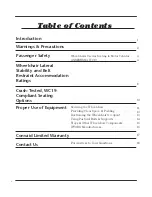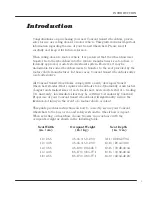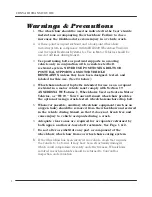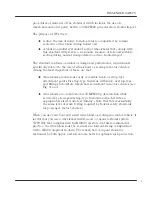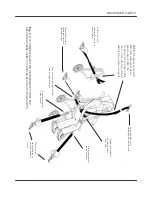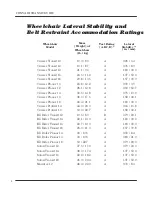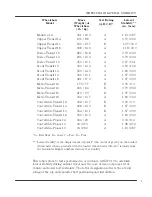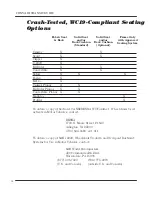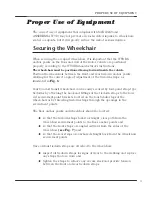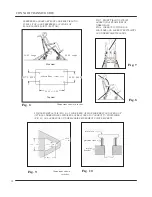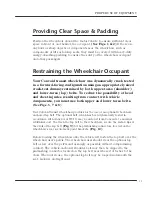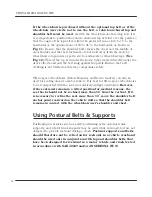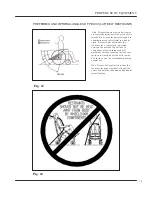
5
procedures of Annex A of the standard, which includes the use of a
wheelchair-anchored pelvic belt in a 30 MPH/20 g deceleration, frontal impact.
The purpose of WC19 is to:
reduce the risk of injury to motor-vehicle occupants who remain
seated in a wheelchair during transit and
establish an industry standard so that wheelchairs that comply with
this standard will provide a reasonable measure of safe and suitable
seating during normal transportation and in a frontal impact.
The standard contains a number of design and performance requirements
specifically related to the use of wheelchairs as seating in motor vehicles.
Among the most important of these are that:
wheelchairs provide four easily accessible hook- or strap-type
attachment points for strap-type tiedowns with hook- or strap-type
end fittings to facilitate wheelchair securement in motor vehicles (see
Fig. 3) and
wheelchairs are crash tested at 30 MPH/20 g deceleration while
secured by a four-point strap-type tiedown and loaded with an
appropriately sized crash-test dummy. (Note that this is essentially
the same level of crash testing required by federal safety standards
for passenger motor vehicles.)
When you use your Convaid transit wheelchair as seating in a motor vehicle, it
is vital that you use a wheelchair tiedown and occupant restraint system
(WTORS) that complies with SAE J2249. As stated in this recommended
practice, the wheelchair must be secured in a forward-facing configuration
with a J2249-compliant tiedown. The wheelchair occupant should be
restrained by both upper- and lower-torso belts for optimal crash protection.
PASSENGER
SAFETY


